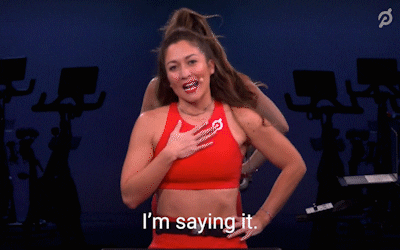The Art Of Critical Reading: How To Transform From Reactive Reader To Reflective Thinker (Part I)
Critical reading isn’t about finding what’s “right."
Arrrrr! 🏴☠️ Welcome to a 🔒 subscriber-only edition 🔒 of Category Pirates. Each week, we share radically different ideas to help you design new and different categories. For more: Dive into an audiobook | Listen to a category design jam session | Enroll in the free Strategy Sprint email course
Dear Friend, Subscriber, and Category Pirate,
Almost 42% of Americans avoid the news today.
And that’s because the news is more bleak than it’s ever been.
By “bleak,” we don’t mean terrible things are happening (although it can feel that way). What’s “bleak” is the reporting. The news is not designed to inform. It’s designed to make you feel negative emotions: sadness, anger, and fear. It’s designed to create division, instead of encouraging original thinking.
The news is designed to freak you out because freaked-out people click more.
For example, think back to July 2023 when the OceanGate Titan submarine exploded and the five people on board died. Here are a few examples of how the media reported the news:
“Lost at sea: Titan victims killed in extreme adventure tourism”
“The Titan Submersible Was “an Accident Waiting to Happen”
“Titan Submarine Tragedy: Victims realised their fate 48 seconds before death, says expert”
Notice the words used: “tragedy,” “victims,” “fate,” “lost at sea,” “waiting to happen.”
You read them and instantly experience a feeling—and feelings form opinions. Maybe you wonder whose fault it was. Maybe you think about how extreme adventures end in accidents. Maybe you’re curious and horrified about the final moments before the explosion. No matter what, you’re more freaked out than you were before you read the headline (on purpose).
These are knee-jerk (reflexive thinking) reactions.
The problem with most content and reading today is it urges us to make snap judgments as soon as a notification pops.
Someone posts an opinion online. In a flash, people jump over each other in the comments to say: “Exactly!” “You’re wrong!” “What an idiot.” “Democrats doing it again!” “Republicans doing it again!” Instead of critically thinking about what we’re reading, we make sense of the world through the lens of our past experiences and reach an (instant) conclusion based on what our past tells us to be true.
This is why we tend to instantly agree or disagree with each other, instead of stopping to think:
What does this information I’m consuming actually mean?
Who’s creating this content I’m consuming?
As we wrote about in The Art of Fresh Thinking, actual thinking isn’t reflexive. It’s reflective. Which means it creates space for meaningful reflection.
You are presented with content.
You become conscious of which model you are using to evaluate the information (which “lens” you are looking through).
And before you react, respond, or give in to your reflexive nature, you pause and first consider which mental model you’re using to examine the information being presented.
You train yourself to be curious. To ask why, to suspend past opinions, beliefs, and mental models, and to open the aperture of your mind to consider the different.
But this requires understanding the different lenses you use to read.
All reading filters through 4 core lenses.
These lenses are essential for critical reading.
Facts: Objective data points
Filters: Personal biases, experiences, and perceptions
Feelings: The emotional responses you have toward information
Forecasts: Predictions or assumptions about the future
It’s not important you know these lenses—it’s important you know how to use them. If you don’t, your rum-soaked monkey brain will revert to reflexive reading instead of elevating to reflective reading. And it will spew out garbagé thoughts.
No legendary Category Designer created a legendary future with reflexive reading (or thinking).
This mini-book explains how to read and interpret information using critical, reflective reading.
It will help you evaluate what you’re reading, thinking, and talking about. Because the inability to think critically about information is the Achilles heel of all time—in business and in life. And unfortunately, most schools, MBAs, and companies don’t teach this skill.
Without critical thinking, you become an echo chamber repeating someone else’s opinions.
You make your brain a receptacle of clickbait and confirmation bias.
You actually stop thinking—you turn off your prefrontal cortex. And you amygdala hijack yourself. As a result, you (literally) can’t think.
When humans are in fight or flight mode, they’re in mega-reaction mode. There’s no time to think when the amygdala kicks in. You’re a primordial beast fighting for survival.
Politicians know this.
Media companies know this.
Social media companies know this.
Social media influencers know this.
(Almost) all categories of media players are in the amygdala hijack business. Because freaked out people click, pay, and vote. Politicians, in particular, are amygdala trigger masters. For example, Hitler devoted two entire chapters of his infamous evil book Mein Kampf to propaganda. He underscored and understood the power of appealing to people's emotions: fear, anger, and hatred.
Thinking people understand that (much) modern content is not designed to inform, educate or entertain—it is purpose-built as amygdala bombs.
Have we triggered you enough to keep reading? 😎
If you’re ready, let’s stretch our frontal lobes, put our monkey minds in a cage and dive in. 🧠💪
The Art Of Critical Reading Through A Category Lens
A Chinese farmer can teach us more about the benefits of critical reading than most.





